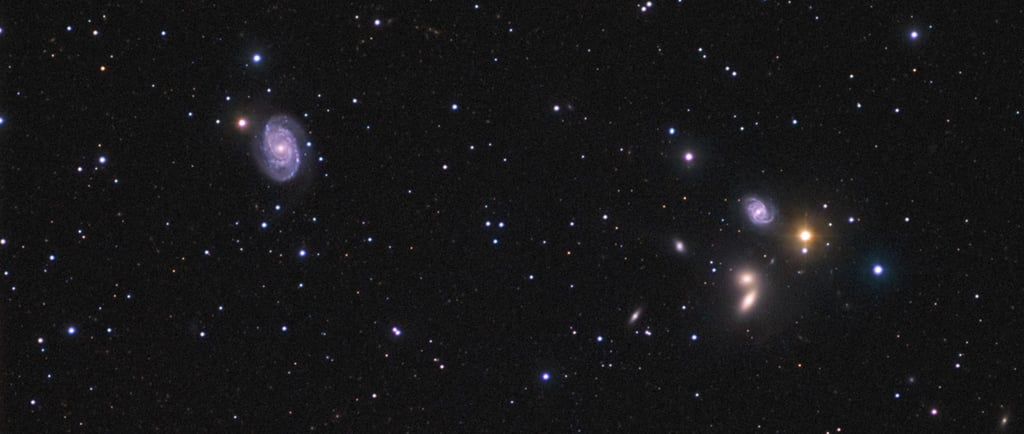Exploring the Dynamics of NGC 5371, NGC 5350, and NGC 5353: A Galaxy Group


Introduction to NGC 5371, NGC 5350, and NGC 5353
The universe is a vast tapestry of galaxies, each with unique characteristics and structures that provide intriguing insights into the nature of the cosmos. Among these celestial formations lies the notable galaxy group comprised of NGC 5371, NGC 5350, and NGC 5353. This triad represents a fascinating example of gravitational relationships and interactions in galactic evolution.
The Characteristics of NGC 5371
NGC 5371 is a striking spiral galaxy located approximately 80 million light-years away in the constellation of Ursa Major. Showcasing a bright core surrounded by wispy arms, it is classified as a Type I spiral galaxy. Observations reveal that NGC 5371 has experienced various dynamic interactions with its fellow galaxies, leading to significant star formation activities. As a result of these interactions, astronomers have been able to gain insights into the processes governing galaxy evolution within this group.
NGC 5350 and NGC 5353: The Neighbors
Adjacent to NGC 5371 are its companions, NGC 5350 and NGC 5353, which complete this fascinating galaxy group. NGC 5350 is classified as an irregular galaxy, also positioned within the Ursa Major constellation. Its unusual structure arises from the gravitational influence of nearby galaxies, contributing to its non-standard form. Similarly, NGC 5353 exhibits remarkable features as a spiral galaxy, showcasing both stellar activity and an active nucleus. The interactions between these three galaxies not only affect their shapes but also their star-forming processes.
The Interaction and Dynamics of the Galaxy Group
The dynamic interactions between NGC 5371, NGC 5350, and NGC 5353 provide a unique laboratory for researchers seeking to understand galaxy collisions and mergers. Over time, gravitational forces perpetuate close encounters that may lead to tidal interactions or even eventual amalgamation. Such interactions allow scientists to explore various phenomena, including the transfer of mass and energy, the formation of tidal tails, and the creation of new stars.
Studies of this galaxy group show that NGC 5371 plays a significant role in shaping the environment around NGC 5350 and NGC 5353. Through the gravitational influences exerted by NGC 5371, enhanced star formation rates are observed in its neighboring galaxies, shedding light on the complexities of galactic relationships. The interconnected fate of these three galaxies exemplifies the role gravitational dynamics play in the larger framework of cosmic evolution.
Conclusion
In conclusion, the galaxy group comprising NGC 5371, NGC 5350, and NGC 5353 serves as a compelling representation of the intricate dance of galaxies throughout the universe. Through observing their characteristics, interactions, and evolution, astronomers can glean valuable insights into the underlying processes that govern the cosmos. As we continue to study these galactic neighbors, we deepen our understanding of how galaxies coexist and evolve, enriching the broader narrative of universal history.
